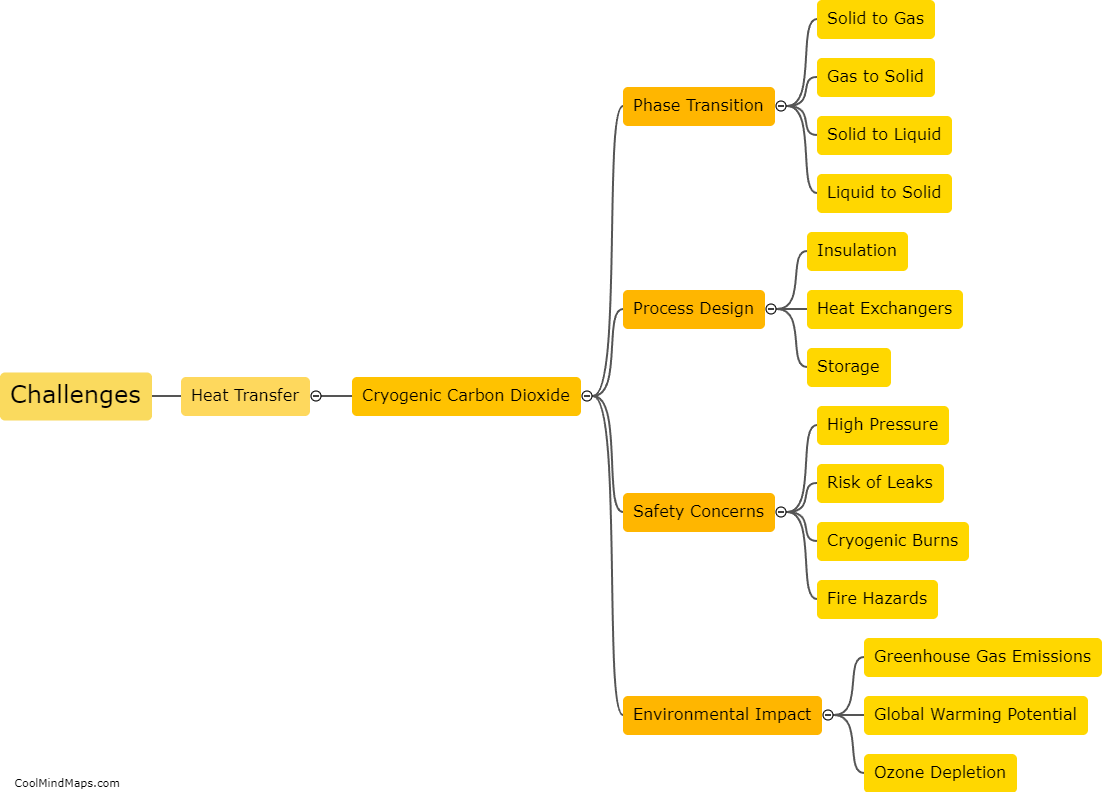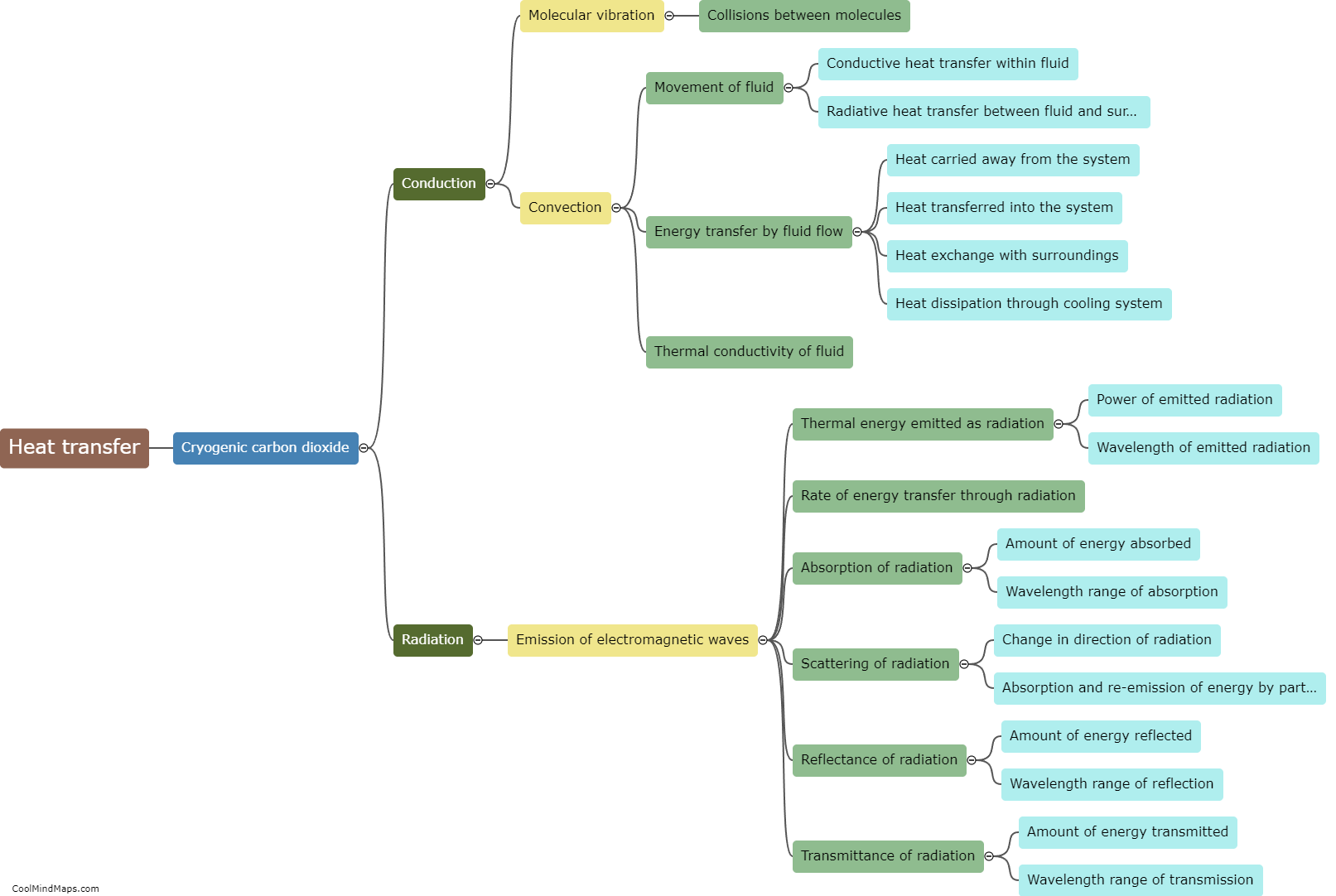What are the challenges in heat transfer with cryogenic carbon dioxide?
One of the major challenges in heat transfer with cryogenic carbon dioxide (CO2) is its low operating temperature. Carbon dioxide becomes a supercritical fluid at temperatures below its critical point (-56.6 degrees Celsius), which makes it a promising medium for various applications. However, its low temperature requires careful consideration of insulation and appropriate materials to prevent heat loss and maintain operational efficiency. Additionally, the phase change behavior of CO2 at lower temperatures affects heat transfer mechanisms, making it important to accurately model and understand the fluid dynamics for effective heat transfer design. Overall, working with cryogenic carbon dioxide presents challenges in terms of insulation, material selection, and fluid behavior, which need to be addressed to optimize heat transfer processes.

This mind map was published on 30 December 2023 and has been viewed 117 times.











